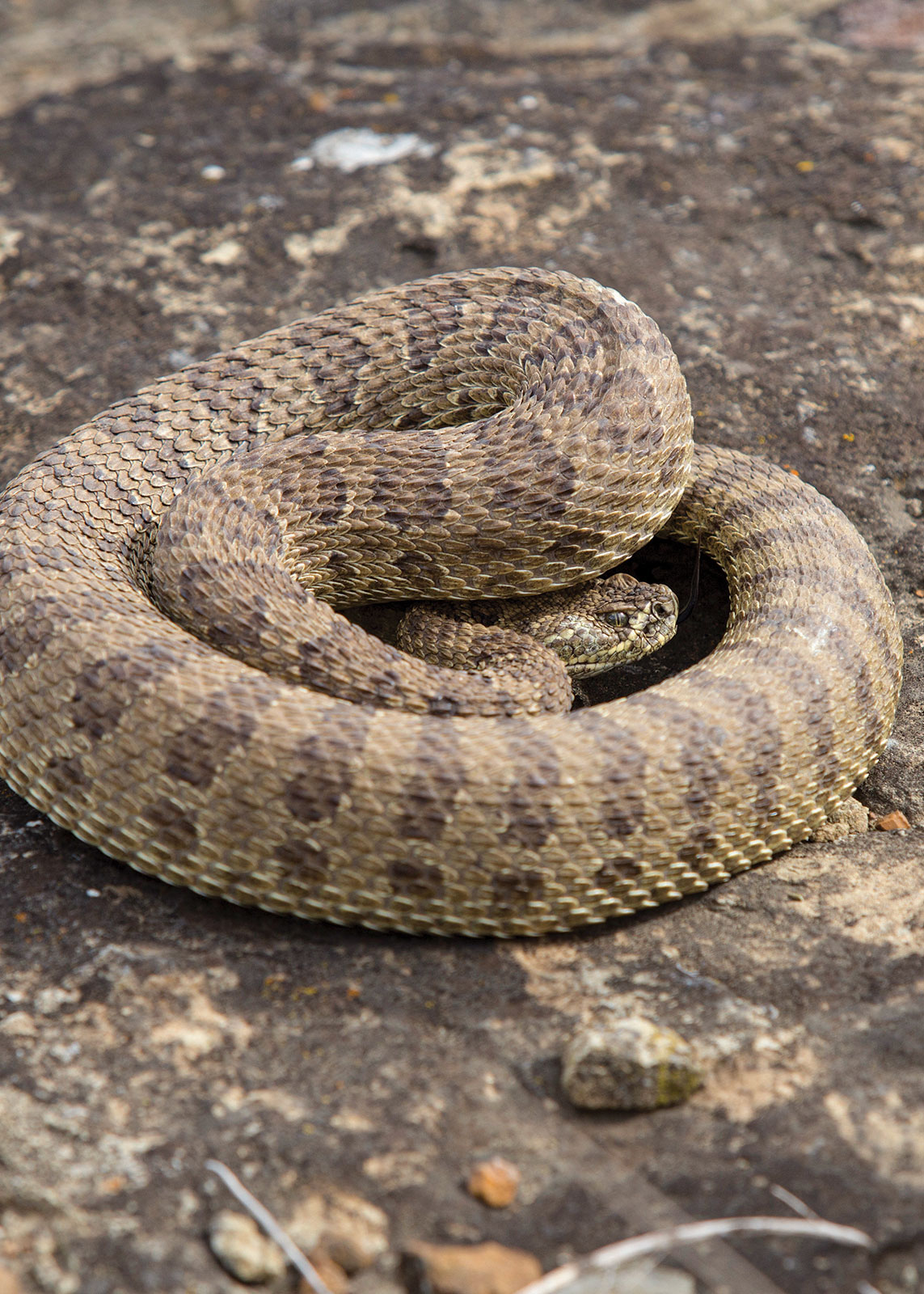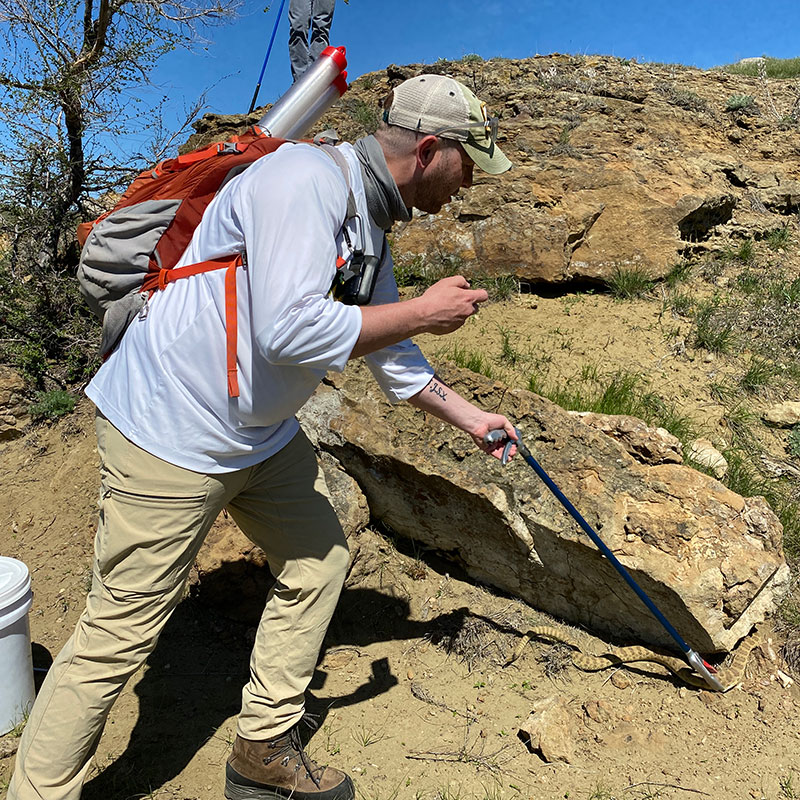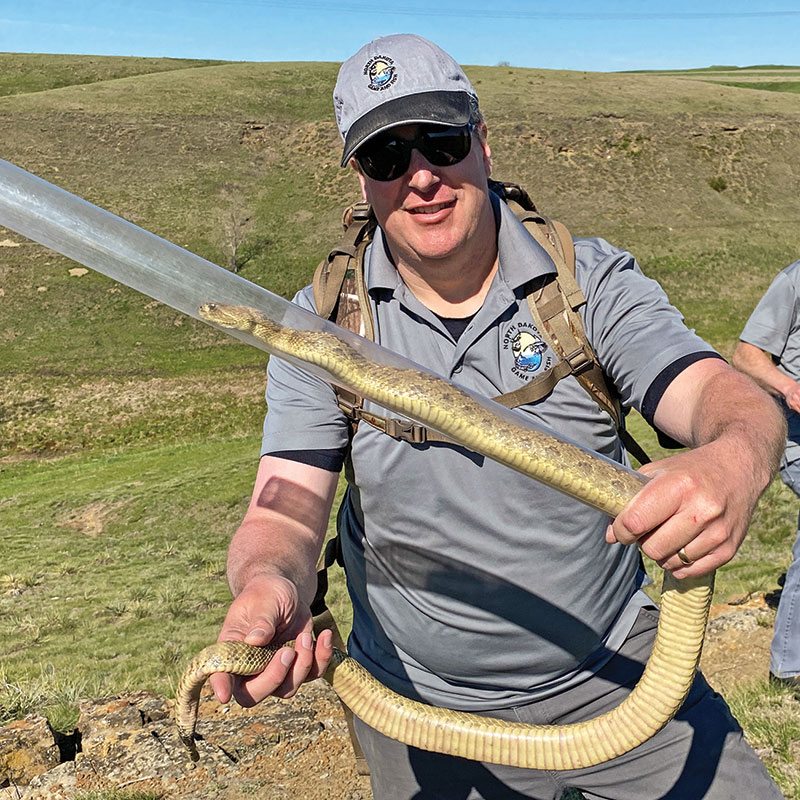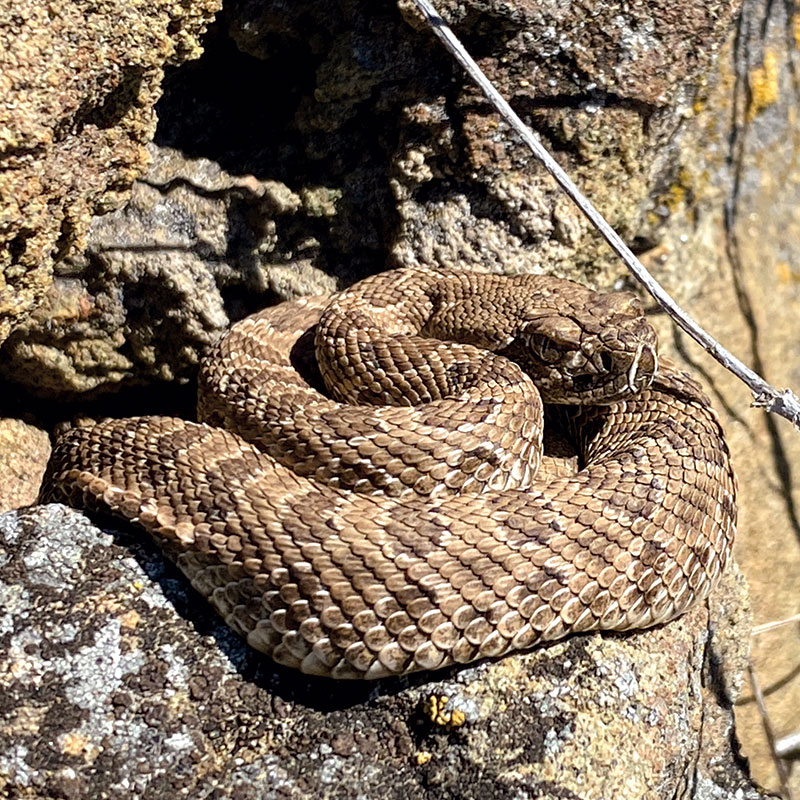Rattlesnake Health Check
Ron Wilson

Matthew Smith has kept tabs on a population of prairie rattlesnakes in Emmons County since 2015, dispelling the fictional buzz long circulated in some circles that there aren’t rattlesnakes east of the Missouri River in North Dakota.
“We were sampling some of the wildlife management areas in the Linton area in 2014 and my field tech at the time actually knew some of the landowners who claimed they had seen rattlesnakes and I knew I had to check it out,” said Smith, associate professor with North Dakota State University biological sciences department. “We looked a lot in 2014, didn’t find any, went back in 2015 in mid-summer and found a couple. And then I went back that fall and was able to verify that there was a den on the east side of the Missouri River. Since then, I’ve tried to get back there as often as I can to monitor the population.”
Smith’s last visit to the den was in mid-May with some Game and Fish Department personnel interested in the often-knocked reptiles. On that day, he said his aim was to simply do a health check on the population that could soon disperse from the den to summer hunting grounds.
“We were able to capture 22 individual rattlesnakes, most of which we actually just looked at general body condition and released right away,” said Smith who noted the most he’d encountered and captured on previous visits was 13. “We weren’t doing a real intensive survey that day, but there were several that we put into the tube. We checked the sex, we checked body condition. The one pregnant female, I was able to palpate to see roughly how many follicles she was developing.”
The tube, Smith mentioned, is clear and once the snake is inside, gives the researcher an up close and personal view. But first, he must capture the rattlesnakes with long-handled tools and place them in a bucket so they can be easily retrieved and examined individually.
“We put the snake on the ground, present the tube and try to get the dangerous part of the snake headfirst into the tube, and then it’s safe for the snake and it’s safe for myself,” he said. “While in the tube, I can take measurements and I can sex the individuals. I’m getting pretty good at looking at a snake and telling whether it’s male or female ... males tend to have longer tails than females.”

Matthew Smith, NDSU associate professor, catches a prairie rattlesnake at a denning site in Emmons County.
If needed for his research, Smith can also individually mark snakes, something he didn’t do in mid-May, using a unique set of clips on the belly, the ventral side.
“I find the cloaca, and then I work my way up on the left side and the right side clipping a unique combination of scales. By doing that, then I know that this is snake 14, this is snake 15, this is snake 16,” he said. “If I just cut the corner of the scale off and they’ll keep those marks for 10 to 15 years, even longer in some cases. It’s a cost-effective way for me to mark individuals.”
“People swerve to hit snakes on the road, they go out of their way to hurt snakes,” he said. “And rattlesnakes, because they’re venomous, are even more persecuted than just snakes in general. I’ve always rooted for the underdog.”
Keep Your Distance
Matthew Smith, associate professor with North Dakota State University biological sciences department, offers some advice when treading in snake country.
“Whatever you do, whether it’s a rattlesnake, a bull snake or any reptile or amphibian, I would just leave it be. You can admire it from a distance, but just let it be on its own,” Smith said. “If you don’t interact with it, it’s not going to interact with you. If you give them their space, we can enjoy them in the wild where they’re supposed to be.”
Smith said most rattlesnake bites happen when humans interact with snakes or invade their space.
“There’s lots of misconceptions about snakes in general and venomous snakes specifically. We have about 7,500 snake bites a year in the U.S. and 60% are males ages 17 to 27. And 30% of those involve alcohol,” Smith said. “Only about 15% of the bites are what I would call legitimate bites, meaning people are not actually messing with the snake. So, most of the bites occur on the hands and arms from people trying to move the snake or kill the snake. Only about 13% of the bites occur on the feet and ankles.”
Certainly, some snake bites on hands and arms are legitimate.
“If you’re putting your hand in a rock crevice and not looking, you might get bit. But most of the bites are people going out of their way to bother the snake and it ends up poorly for that person,” Smith said. “If you give them their space, they will move away from you. They will not strike. They try to avoid contact at all costs.”
And, no, prairie rattlesnakes don’t chase people.
“The myth about them chasing people … I can pretty much guarantee that if they are coming at you, that’s because you are between the snake and it’s hiding place,” he said. “It’s happened to me countless times. All I got to do is move a couple of feet to the side and they’ll leave me alone. They’ll go right to their hole. They don’t want anything to do with me if they don’t have to.”


